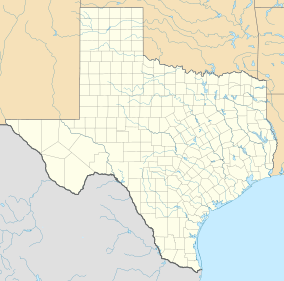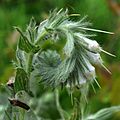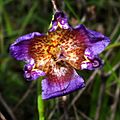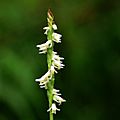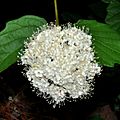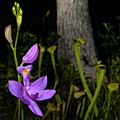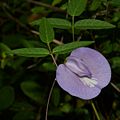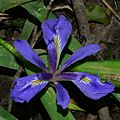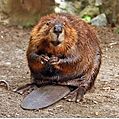Big Thicket facts for kids
Quick facts for kids Big Thicket National Preserve |
|
|---|---|
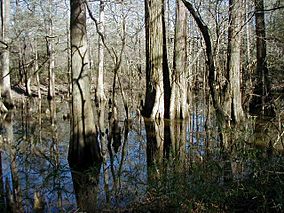 |
|
| Location | Southeast Texas, U.S. |
| Nearest city | Kountze, Texas |
| Area | 113,122 acres (457.79 km2) |
| Authorized | October 11, 1974 |
| Visitors | 137,722 (in 2011) |
| Governing body | National Park Service |
| Website | Big Thicket National Preserve |
The Big Thicket is a huge, thick forest area in Southeast Texas, United States. It's known for its many different kinds of trees, like pines and hardwoods. In 1974, the National Park Service created the Big Thicket National Preserve (BTNP) here.
This preserve is also a special "biosphere reserve" recognized by UNESCO. This means it's a place where people try to balance nature conservation with human activities.
The Big Thicket is amazing because it has so many different natural areas, called ecosystems. Scientists have found at least eight to eleven different types of ecosystems here. It's also home to a huge variety of plants. You can find over 160 kinds of trees and shrubs, 800 types of herbs and vines, and 340 kinds of grasses. Some experts even think there might be over 1,000 flowering plants and 200 trees and shrubs. Plus, there are ferns and even plants that eat insects! Historically, the Big Thicket was the densest forest in Texas.
Native Americans used to live and hunt in the Big Thicket, moving around with the seasons. They didn't build permanent towns until the Alabama–Coushatta settled in the area around 1780. Spanish explorers usually went around the Big Thicket because it was so dense.
Later, in the late 1800s and 1900s, a lot of trees were cut down for lumber. People started trying to protect the Big Thicket as early as the 1920s. Even though some people debate how unique the Big Thicket is compared to similar areas nearby, everyone agrees it's important to save this special place.
The exact edges of the Big Thicket are a bit blurry. But it generally covers all of Hardin County, most of Polk and Tyler counties. It also includes parts of Jasper, Liberty, and San Jacinto counties. It stretches between the Neches River on the east and the Trinity River on the west.
Contents
Exploring Big Thicket Geography
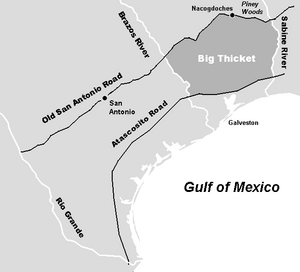
The Big Thicket is mostly flat or has gentle hills. It sits on the flat coastal plain of Texas. Many small streams flow through the area. In the past, the Big Thicket was much larger, covering over 2 million acres in east Texas.
Spanish rulers once described its boundaries. To the north was El Camino Real de los Tejas, an old trail. To the south was La Bahia Road. The Brazos River was to the west, and the Sabine River was to the east. However, a lot of trees were cut down in the 1800s and 1900s. This greatly reduced the size of the dense forest. Before 1854, the Alabama-Coushattas lived in the Big Thicket.
Scientists believe the Big Thicket's flat land was shaped by an ancient inland sea. This sea covered much of North America during the time of the dinosaurs. Over millions of years, water smoothed out the land along what is now the Texas coastline.
Small towns are found within the Big Thicket. Many of these towns grew in the late 1800s because of the lumber industry. You can see this in names like Lumberton. As roads like US 59, US 69, and 96 were built, these towns became suburbs of bigger cities like Beaumont and Houston.
Amazing Big Thicket Wildlife
What the Big Thicket might lack in dramatic mountains, it makes up for with its incredible variety of life. This is called biodiversity. During the last ice age, many different kinds of plants and animals moved into this area. Long ago, huge animals like mammoths also lived here before they became extinct.
Today, the Big Thicket is still home to countless species. It's often called the "biological crossroads of North America" or even the "American Ark." It has over 100 types of trees and shrubs. The Longleaf pine trees used to be the most common. The Big Thicket National Preserve is working to bring these trees back. They even use controlled fires to help the forest grow healthy. For the National Park Service's 100th birthday in 2016, they aimed to plant hundreds of thousands of Longleaf Pines.
The National Park Service says there are over a thousand kinds of flowering plants and ferns in the thicket. This includes 20 types of orchids and four kinds of carnivorous plants (plants that eat insects!).
The animal life is just as rich. There are 300 kinds of birds that either live here or stop during migration. Some, like the Red-cockaded Woodpecker, are endangered. There are also many reptiles, including all four types of venomous snakes found in North America. And yes, there are alligators too!
Famous People from the Big Thicket Area
- John Alexander (born 1945) – An American painter who often gets ideas from the landscapes of Southeast Texas.
- Brian Philip Babin (born 1948) – A U.S. representative for Texas since 2015.
- Annette Gordon-Reed (born 1958) – A historian and author who won a Pulitzer Prize.
- George Glenn Jones (1931–2013) – A famous country music singer and songwriter.
- Margo Jones (1913–1955) – A stage and theater director known as "The Texas Tornado."
- Aubrey Wilson Mullican (1909–1967) – A country-western musician and songwriter, called "King of the Hillbilly Piano Players."
Images for kids
-
Coral bean (Erythrina herbacea) Tyler County
-
Rose mallow (Hibiscus sp.) Hardin County
-
Turkcap (Malvaviscus arboreus var. drummondii) San Jacinto County
-
Southern arrowwood (Viburnum dentatum), Tyler County
-
Pitcher plant (Sarracenia alata), Tyler County
-
Short-stem iris (Iris brevicaulis) Polk County


